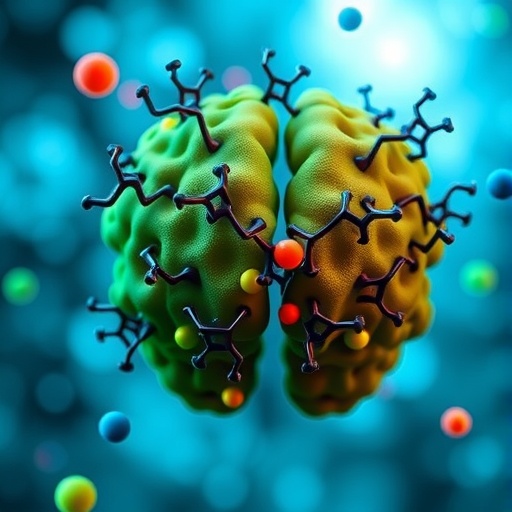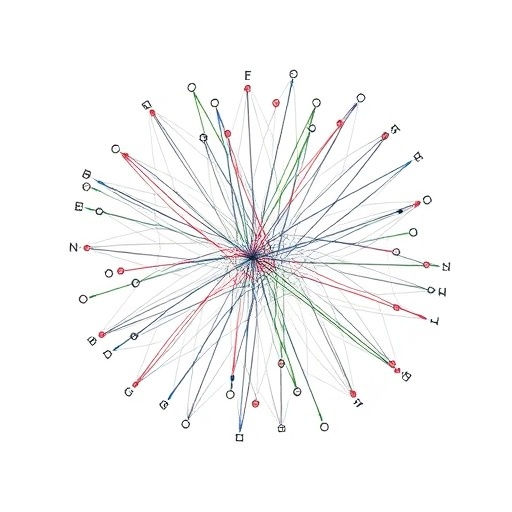Recent advances in our understanding of the genetic underpinnings of neuropsychiatric disorders have illuminated the multifaceted nature of how mutations affect neuronal function. Among these, a particular focus has emerged around the neurexin-1 gene, known as NRXN1, which has been implicated in various severe neuropsychiatric disorders when affected by copy number variants. These mutations reveal complex interactions between specific gene variants and the therapeutic approaches that could be tailored for individual patients.
Neurexin-1 is a gene that encodes a crucial presynaptic cell-adhesion protein, which plays an essential role in forming and maintaining synaptic structures within the brain. The presynaptic terminal is pivotal for neurotransmission, and thus any disturbances in the activity or composition of neurexin-1 can lead to significant synaptic dysfunction. Notably, studies of the 2p16.3 chromosomal region highlight that heterozygous deletions in NRXN1 can lead to disrupted splicing patterns, which in turn can severely compromise the connectivity within neuronal circuits.
One of the intriguing aspects of NRXN1 is its complex alternative splicing. This process generates a wide array of isoforms of the protein, each tailored for the diverse needs of distinct neuronal populations. While alternative splicing is a common theme throughout many genes, the patterns specific to NRXN1 are particularly critical in establishing and maintaining synaptic integrity. The variability in splicing and the resulting diversity in isoform expression are not merely academic concerns; they are fundamental to our understanding of how specific mutations can manifest in disorders of the brain.
In research leveraging human-induced pluripotent stem cells (iPSCs), scientists have begun to elucidate the cell-type-specific ramifications of mutations within NRXN1. Initial findings indicate that patient-specific alterations in splicing lead to divergent effects on synaptic function in different neuronal populations. For instance, glutamatergic neurons, which primarily use glutamate as a neurotransmitter, appeared to experience decreased synaptic activity when affected by certain NRXN1 mutations. Conversely, GABAergic neurons, responsible for inhibitory neurotransmission, exhibited a notable increase in synaptic activity as a result of the same genetic aberrations.
These preliminary observations underscore the necessity for a nuanced perspective on gene mutations within the context of neuropsychiatric disorders. The divergent activities in glutamatergic versus GABAergic neurons highlight how similar genetic perturbations can lead to opposing functional outcomes, which raises challenging questions about treatment strategies. This complexity demands a more personalized approach to precision medicine, whereby patients can be stratified based on the nature of their mutations—whether they act through loss-of-function (LOF) or gain-of-function (GOF) mechanisms.
Understanding these mechanisms is vital for developing targeted therapies that could effectively mitigate the effects of specific NRXN1 mutations. The research indicates that for NRXN1 deletions, a comprehensive approach aiming to restore the correct balance of isoform expression could lead to improved therapeutic outcomes. For instance, increasing the expression of wild-type isoforms while simultaneously abrogating the deleterious effects of mutant isoforms could yield promising strategies for restorative therapies.
Moreover, the ongoing analysis of how mutations within the NRXN1 gene interact with various cellular pathways provides new insights into potential therapeutic targets. It has become increasingly clear that the interplay between LOF and GOF mutations offers a unique landscape in which targeted interventions could orchestrate a return to functional homeostasis in affected neurons. As the field of neurogenetics continues to evolve, the implications of these findings could extend beyond NRXN1, suggesting broader applications to other genes implicated in neuropsychiatric disorders.
As researchers delve deeper into the nuances of how specific gene mutations shape neural circuitry, the principles of precision medicine increasingly take center stage. The complexity highlighted by the study of NRXN1 underlies the pressing need for customized treatment plans that account for individual genetic makeups. With the prevalence of neuropsychiatric disorders on the rise, such tailored approaches may ultimately enhance our ability to restore balance in neural communication and connectivity.
Furthermore, it is essential to recognize that the implications of this research extend far beyond the laboratory. Educating health care professionals and the broader public about the intricacies of genetic mutations like those affecting NRXN1 will be crucial in shaping future therapeutic paradigms. As more patients receive genetic testing and outpatient interventions, the potential for early interventions targeting specific mutations grows exponentially.
In conclusion, the implications of significant deletions in NRXN1 illustrate a complex interplay between genetics and neurobiology that is only beginning to be understood. The meticulous exploration of LOF and GOF mechanisms offers a rich tapestry of insights for therapeutic development, emphasizing the importance of personalized medicine in addressing diverse neuropsychiatric conditions. Ongoing research efforts will undoubtedly further unravel the complexities behind these mutations, ultimately driving innovative and effective treatment strategies tailored to the needs of individual patients.
As we move forward, the study of NRXN1 serves as both a beacon of hope and a testament to the intricate relationship between genetics and brain health. By embracing the complexities surrounding gene mutations and their connected pathways, we stand on the cusp of revolutionary advancements in our approach to neuropsychiatric disorders, potentially transforming the landscape of treatment in profound ways.
Subject of Research: The impact of NRXN1 mutations on neuropsychiatric disorders and the implications for precision medicine.
Article Title: Phenotypic complexities of rare heterozygous neurexin-1 deletions.
Article References:
Fernando, M.B., Fan, Y., Zhang, Y. et al. Phenotypic complexities of rare heterozygous neurexin-1 deletions.
Nature (2025). https://doi.org/10.1038/s41586-025-08864-9
Image Credits: AI Generated
DOI: 10.1038/s41586-025-08864-9
Keywords: NRXN1, neuropsychiatric disorders, precision medicine, gene mutations, synaptic function, alternative splicing, glutamatergic neurons, GABAergic neurons, loss-of-function, gain-of-function, personalized therapy.
Tags: alternative splicing of neurexin-1chromosomal region 2p16.3 deletionscopy number variants in NRXN1genetic underpinnings of neuronal functionindividualized treatmentisoforms of neurexin-1 proteinneurexin-1 gene mutationsneuronal connectivity and NRXN1neuropsychiatric disorders geneticspresynaptic cell-adhesion proteinssynaptic dysfunction and neurexin-1therapeutic approaches for neuropsychiatric disorders





